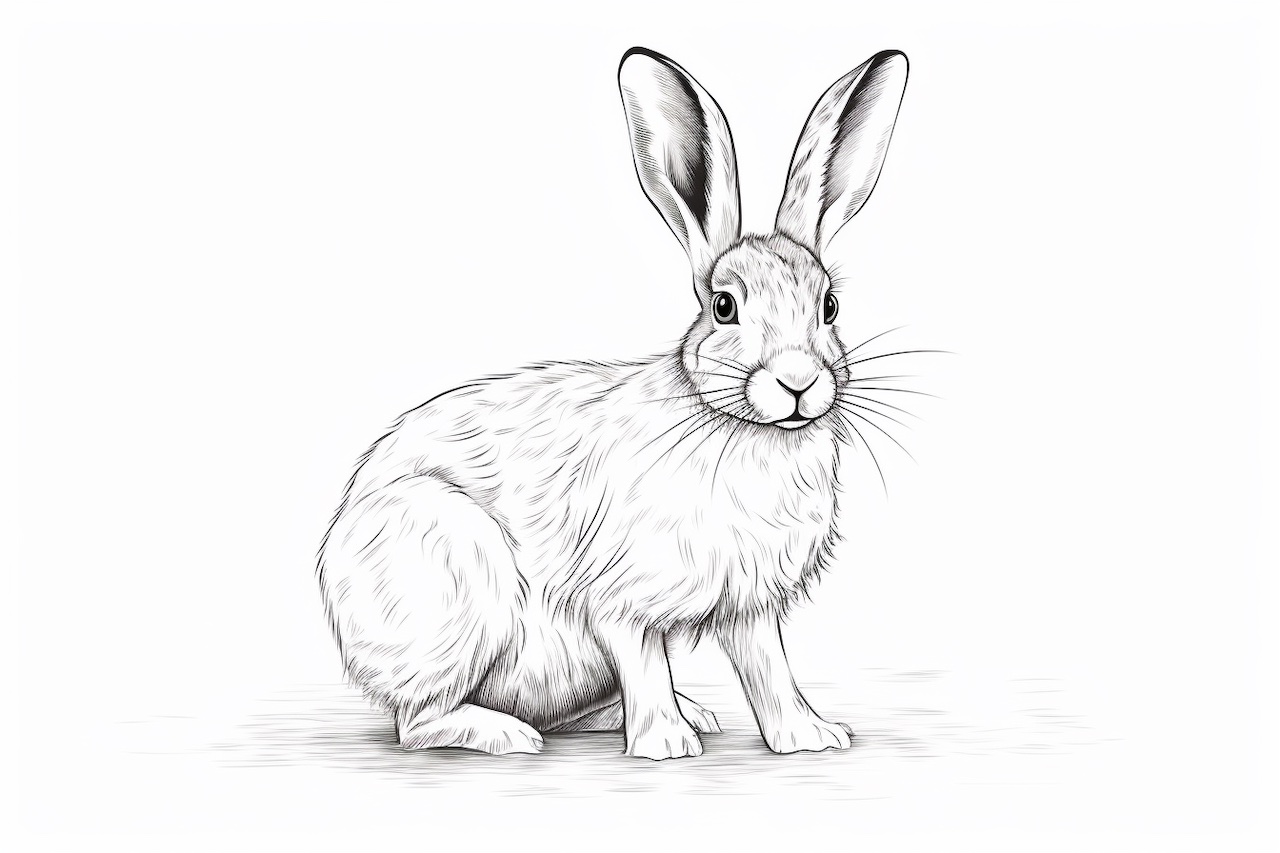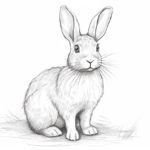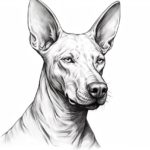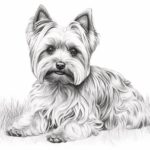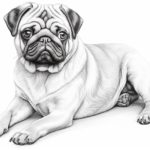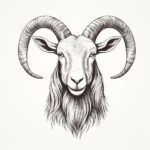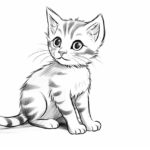Welcome to this step-by-step guide on how to draw a hare. Whether you’re an experienced artist or just starting out, this tutorial will provide you with clear and concise instructions to create a beautiful hare drawing. Hares are known for their long ears and powerful hind legs, and by the end of this tutorial, you’ll have a stunning representation of this magnificent creature. So, let’s get started!
Materials Required
Before we begin, let’s gather the materials you’ll need for this drawing tutorial:
- Drawing paper or sketchbook
- Pencils (HB, 2B, 4B, and 6B)
- Eraser
- Blending stump or tortillon
- Reference image of a hare (optional but recommended)
Now that you have your materials ready, let’s jump into the step-by-step instructions.
Step 1: Basic Guidelines
Start by lightly sketching the basic guidelines for your hare drawing. Use a light pencil (HB) and create a rough outline of the hare’s body shape. Identify the head, body, and legs, keeping in mind the proportions and posture of a hare.
Step 2: Head and Facial Features
Now, let’s focus on the hare’s head and facial features. Begin by shaping the head, keeping it slightly rounded. Then, draw the long ears, tapering them towards the tips. Pay close attention to the reference image to capture the unique characteristics of a hare’s face. Add the eyes, nose, and mouth, carefully observing the details and proportions.
Step 3: Body and Legs
Next, work on the hare’s body and legs. Pay attention to the posture and powerful hind legs characteristic of a hare. Sketch the body, adding volume and shape. Then, draw the front legs, keeping them relatively shorter and less defined compared to the hind legs. Remember to maintain the proportions and posture as you progress through this step.
Step 4: Fur and Textures
This step will bring your hare drawing to life by adding fur and textures. Start by lightly sketching the direction of the fur using short, gentle strokes. Hares have thick fur, so focus on capturing the texture and volume accurately. Gradually build up the details and shading, using different pencil grades (2B, 4B, and 6B) to create depth and dimension. Use an eraser to lighten areas and create highlights if necessary.
Step 5: Refining and Blending
Take a moment to step back and observe your hare drawing. This is the perfect time for refining and blending. Use a kneaded eraser to gently lift excess graphite and refine the details. Pay attention to the contrast and values, ensuring a well-balanced drawing. For a smoother appearance, use a blending stump or tortillon to blend the shading and create a seamless transition of tones.
Step 6: Final Touches
As you approach the final touches, take a critical look at your hare drawing. Make any necessary adjustments to ensure accuracy and proportion. Enhance the details and add depth by using darker pencil grades (4B or 6B). Add additional texture and fur details as needed. Take your time to achieve the desired outcome.
Conclusion
Congratulations! You’ve successfully completed this step-by-step guide on how to draw a hare. By following these instructions and utilizing your artistic skills, you’ve created a stunning representation of this magnificent creature. Remember, practice makes perfect, so continue to refine your drawing technique and explore different subjects. Enjoy the process and keep honing your artistic abilities.
Fun Facts About Hares
- Speed Demons: Hares are incredibly fast runners, capable of reaching speeds up to 45 miles per hour (72 kilometers per hour). This speed helps them evade predators like foxes and coyotes.
- Long Legs: Their long hind legs are built for running, allowing them to cover large distances quickly. They can also leap up to 10 feet (3 meters) in a single bound.
- Differences from Rabbits: While hares may resemble rabbits, they have several distinct differences. Hares are typically larger with longer ears and legs, and they tend to have black-tipped ears.
- Solitary Creatures: Unlike rabbits, which often live in groups, hares are usually solitary animals. They prefer to live alone, only coming together to mate.
- Diverse Habitats: Hares can be found in a variety of habitats, including grasslands, woodlands, and deserts, depending on the species. They are adaptable creatures that can thrive in different environments.
- No Burrows: Unlike rabbits, hares do not dig burrows. Instead, they typically make nests called “forms” in tall grass or under bushes for shelter.
- Nocturnal Activity: Hares are primarily nocturnal, meaning they are most active during the night. This behavior helps them avoid predators and stay cool during hot days.
- High Reproduction Rate: Hares reproduce quickly, with females typically giving birth to multiple litters of leverets (baby hares) each year. This high reproductive rate helps maintain hare populations despite high predation rates.
- Camouflage: Hares have excellent camouflage, with fur that changes color with the seasons to blend in with their surroundings. In winter, their fur may become white to match the snow, while in summer, it may be brown or gray to match the foliage.
- Dietary Habits: Hares are herbivores, primarily feeding on grasses, herbs, and other plant material. They have a specialized digestive system that allows them to efficiently digest tough plant matter.
- Communication: Hares communicate through a variety of vocalizations, body language, and scent marking. They may thump their hind feet on the ground to warn other hares of danger or to establish territory.
- Cultural Significance: Hares have appeared in folklore and mythology throughout history, often symbolizing fertility, rebirth, or cunning. They feature prominently in stories from various cultures around the world.

